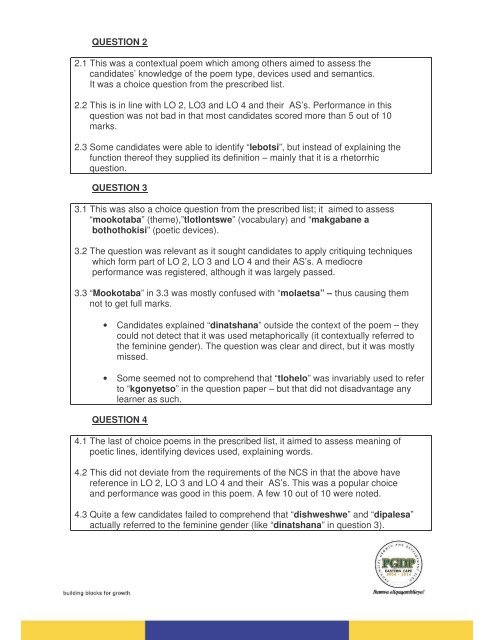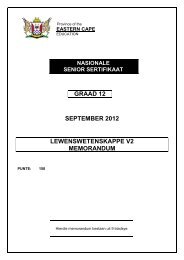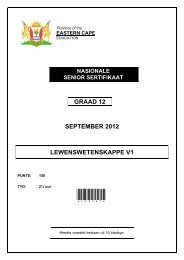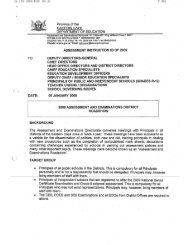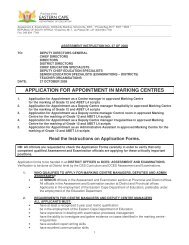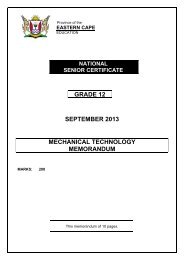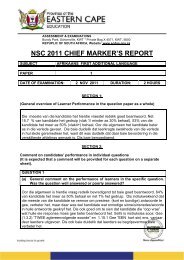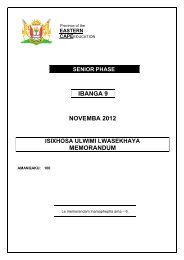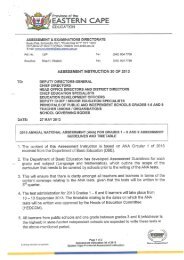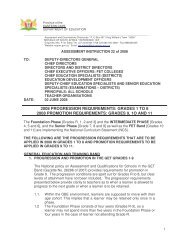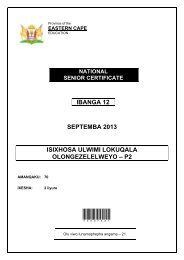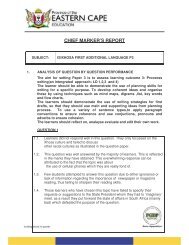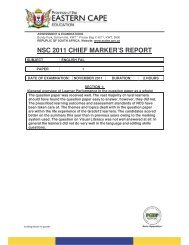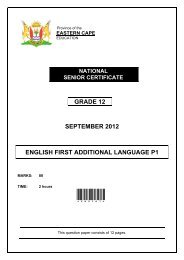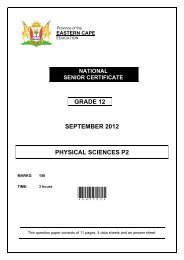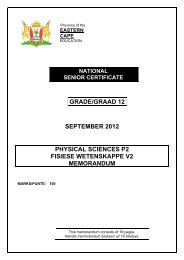Sesotho HL Paper 2 - Ecexams.co.za
Sesotho HL Paper 2 - Ecexams.co.za
Sesotho HL Paper 2 - Ecexams.co.za
You also want an ePaper? Increase the reach of your titles
YUMPU automatically turns print PDFs into web optimized ePapers that Google loves.
QUESTION 22.1 This was a <strong>co</strong>ntextual poem which among others aimed to assess thecandidates’ knowledge of the poem type, devices used and semantics.It was a choice question from the prescribed list.2.2 This is in line with LO 2, LO3 and LO 4 and their AS’s. Performance in thisquestion was not bad in that most candidates s<strong>co</strong>red more than 5 out of 10marks.2.3 Some candidates were able to identify “lebotsi”, but instead of explaining thefunction thereof they supplied its definition – mainly that it is a rhetorrhicquestion.QUESTION 33.1 This was also a choice question from the prescribed list; it aimed to assess“mookotaba” (theme),”tlotlontswe” (vocabulary) and “makgabane abothothokisi” (poetic devices).3.2 The question was relevant as it sought candidates to apply critiquing techniqueswhich form part of LO 2, LO 3 and LO 4 and their AS’s. A mediocreperformance was registered, although it was largely passed.3.3 “Mookotaba” in 3.3 was mostly <strong>co</strong>nfused with “molaetsa” – thus causing themnot to get full marks.• Candidates explained “dinatshana” outside the <strong>co</strong>ntext of the poem – they<strong>co</strong>uld not detect that it was used metaphorically (it <strong>co</strong>ntextually referred tothe feminine gender). The question was clear and direct, but it was mostlymissed.• Some seemed not to <strong>co</strong>mprehend that “tlohelo” was invariably used to referto “kgonyetso” in the question paper – but that did not disadvantage anylearner as such.QUESTION 44.1 The last of choice poems in the prescribed list, it aimed to assess meaning ofpoetic lines, identifying devices used, explaining words.4.2 This did not deviate from the requirements of the NCS in that the above havereference in LO 2, LO 3 and LO 4 and their AS’s. This was a popular choiceand performance was good in this poem. A few 10 out of 10 were noted.4.3 Quite a few candidates failed to <strong>co</strong>mprehend that “dishweshwe” and “dipalesa”actually referred to the feminine gender (like “dinatshana” in question 3).


